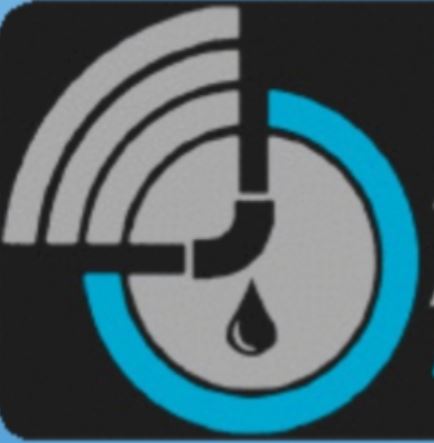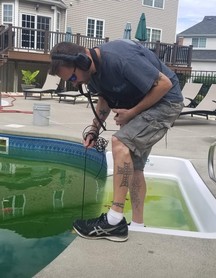-
Related Posts
- How to Open a Swimming Pool
Swimming is a fun activity, especially for children. Opening your…
- How to Buy a Swimming Pool
When buying something as large as a swimming pool, there…
- Home
- Pool Leak Repair
- Pool Pressure Testing
- Pool Leak Detection
- About Us
- Contact
Navigation- Home
- Pool Leak Repair
- » Main Drain Testing
- » Hotel Main Drains
- » Emergency Main Drain Repair
- » Additional Services
- » Vinyl Pool Liners
- » Pool Covers
- » Pool Repair Diver
- » The Leakalyzer - Leak or Evaporation Test
- » Pool Skimmer Problems
- » Termite Leak Repair
- » Pool Leak Detection
- » Underwater Services
- Pool Pressure Testing
- » Pipe Leak Detection - Underground
- » Skimmer Repair
- Pool Leak Detection
- About Us
- » Training and Support
- » » Leak Detection Training
- » » Leak Phone Support
- » FAQ
- » Testimonials
- » Checklist Before We Come
- » Service Areas
- » Privacy Policy
- » Leak Videos
- » » Leak Articles
- » » » Swimming Pool Leak Detection
- » » » Do leak companies fix leaks
- » » » Pool Leaks - home owners save money
- » » » Pool Water Evaporation
- » » » Pool Dye Testing
- » » » Narrow down a pool leak
- » » » Pool Structure Leaks
- » » » Pool Leak Indicator Level
- » » » Water Loss Speed
- » » » Pool Plumbing Leaks
- » » » Why Pools Leak
- » Terms & Conditions
- Contact
- » Email - Phone
Call Us 732-705-7344
NJ LICENSED & FULLY INSURED
How Swimming Pools Leak
How Swimming Pools Leak
How Do Pools Tend To Break
Understanding how swimming pools tend to break is one of the best tools you can have when trying to locate a leak. This is where an experienced swimming pool technician will have a distinct advantage over a pool owner trying to find a leak in their pool. There is no replacement for experience when it comes to being able to solve complicated problems by observation and interpreting the results of your tests. While you may not be able to have the benefit of years of leak detection experience you can at least be aware of some of the most common ways that swimming pools tend to break.
Return lines - The return lines of the pool are one of the most common parts of the plumbing system to develop a leak. When you attach a return pipe to the wall of the pool you are supposed to attach a 90 degree elbow and turn the pipe straight down directly after the return flange. By turning the pipe downwards immediately you relieve stress on the return fitting connection. In the event that a pipe is taken straight out the back of a return fitting, even by a small amount, the settling of the fill around the pool will cause the pipe to sink slightly. Even a slight settling on the pipe will put a great deal of stress on the connection point on the wall of the pool. The pool wall has zero give and the pipe has no choice but to move with the settling ground. The weak point will eventually crack right where the pipe meets the return fitting on the backside of the pool wall. A failed glue joint, dry fit fitting, or pipe fracture from freezing are all possible and can happen anywhere within the return line. Failures where the return pipe meets the pool wall however are more common than every other return line failure combined.
Skimmer lines - The skimmer line is most likely to develop a leak directly where it connects to the bottom of the skimmer itself. This area is prone to leaks due to the transition fitting between the pipe and the skimmer itself. Some skimmers use threaded connection points and some use a glued slip connection. Many glue style skimmers are made from ABS and a transition glue needs to be used to get a secure connection between the two materials. Using a PVC glue where a transition glue should have been used is a very likely place to develop a leak. If the skimmer uses a threaded connection then using the correct thread sealant is important. Teflon tape is the best material for making a permanent threaded connection to the underside of the skimmer. PVC glue is another good choice if both the skimmer as well as the pipe being used are PVC. In the event that a common thread sealant from the plumbing industry is used, pipe dope, there is the possibility that a crack can develop over time. Petroleum based thread sealants like pipe dope expand over time which is great for a secure seal on metal pipe systems. The relative weakness of the PVC systems used on swimming pools are not strong enough to withstand the expansion of the pipe dope and cracking of the connection on the underside of the skimmer can happen. In the event that water is able to become trapped in the skimmer line over the winter (in cold climate areas) then it is likely that the pipe directly below the skimmer will sustain damage. In some cases a very careful examination of the pipe below the skimmer using a flashlight will reveal cracks in the pipe directly where is exits the bottom of the skimmer. Unfortunately leaks in skimmers can be fairly difficult to deal with as access to the underside of the skimmer is obviously limited.
Plumbing materials - If the plumbing lines that were used to install your swimming pool are known to be problematic then this would be a strong indicator towards a leak in the plumbing system. Schedule 40 PVC pipe, either flexible or rigid, is the industry standard minimum for pool installations. Using HDPE (high density polyethylene) or LDPE (low density polyethylene) was common in previous years and is recognizable due to the barbed fittings and stainless steel clamps used to make fitting connections. While poly pipe is suitable for swimming pool installations it is an antiquated process for the most part with most current day installers preferring PVC systems. The pipe connection points on poly pipe are susceptible to failure over time. A failing pipe clamp will start by leaking slowly, most likely too slow for you notice at first, but will increase over time. Eventually a pipe clamp can fail completely which will allow even more water loss from this location. The quality of a poly pipe connection is only as good as the person making the connection. Using heat on the pipe, or a black tar product, or both, are good ways to increase the quality of a poly pipe connection. Using a ratchet as opposed to a screwdriver to tighten the clamp is important to ensure a leak free seal. High quality stainless steel clamps are also important as low quality stainless steel will corrode when buried or exposed to chlorinated water. While there are many other types of plumbing materials used on swimming pools PVC and poly are the only two accepted materials used in current day installations.
Copper pipe, ABS pipe, schedule 20 PVC or galvanized steel pipes should all be avoided for use in swimming pools. If you have any of these materials used on your swimming pool then the chances of you having one, or many, leaks in your plumbing system go up dramatically. In my experience I would tend to avoid extensive troubleshooting on plumbing systems using any of these materials. If you have these materials on your plumbing system then they are a guaranteed failure just waiting to happen. Spending money on labor finding leaks in a faulty plumbing system is not a good investment of time and money in my mind. If you have inferior plumbing materials then you may want to explore the potential for replacing all of your plumbing lines to something more reliable. The benefit of this approach is that you do not waste any money chasing a leak and instead replace the entire plumbing system right away. While this is going to be a costly project, and not something that you will have the option to do on every pool, it is worthwhile to consider doing anytime you discover a leak in the plumbing system of your pool. Replacing the plumbing lines completely may end up being the lesser of two evils and a more efficient allocation of your time and money.
Monmouth County Service Areas
Aberdeen Asbury Park Atlantic Highlands Avon-by-the-Sea Belmar Bradley Beach Brielle Colts Neck Eatontown Fair Haven Freehold Borough Freehold Township Hazlet Highlands Holmdel Howell Keansburg Keyport Little Silver Long Branch Manalapan Manasquan Marlboro Matawan Middletown Millstone Monmouth Beach Neptune Neptune City Ocean Oceanport Red Bank Rumson Shrewsbury Spring Lake Spring Lake Heights Tinton Falls Union Beach Upper Freehold Wall West Long Branch
Middlesex County Service Areas
AT THE PRESENT TIME WE DO OFFER SERVICES TO:
Carteret Cranbury Dunellen East Brunswick Edison Helmetta Highland Park Jamesburg Metuchen Middlesex Milltown Monroe New Brunswick North Brunswick Old Bridge Perth Amboy Piscataway Plainsboro Sayreville South Amboy South Brunswick South Plainfield South River Spotswood Woodbridge
Ocean County Pool Service Areas
WE OFFER SERVICES TO THE FOLLOWING AREAS ONLY:
Bay Head, Brick, Lavallette, Mantoloking, Point Pleasant, Seaside Heights, Toms River
AT THE CURRENT TIME WE DO OFFER SERVICES TO:
Barnegat Beach Haven Beachwood Berkeley Eagleswood Harvey Cedars Island Heights Jackson Lacey Lakehurst Lakewood Little Egg Harbor Long Beach Manchester Mantoloking Ocean Gate Ocean Pine Beach Plumsted Ship Bottom South Surf City Stafford Toms River Tuckerton
Pool Leak Detection in
Monmouth, Ocean And Middlesex Counties NJ
NJ POOL PATCHER
NJ Pool Patcher, LLC
29 Roberts Drive
Neptune City, NJ 07753
732-705-7344
Sales@PoolPatcher.com
- Pool Leak Detection & Pool Leak Repair Services : NJ Pool Patcher A Pool Article How Swimming Pools Leak


